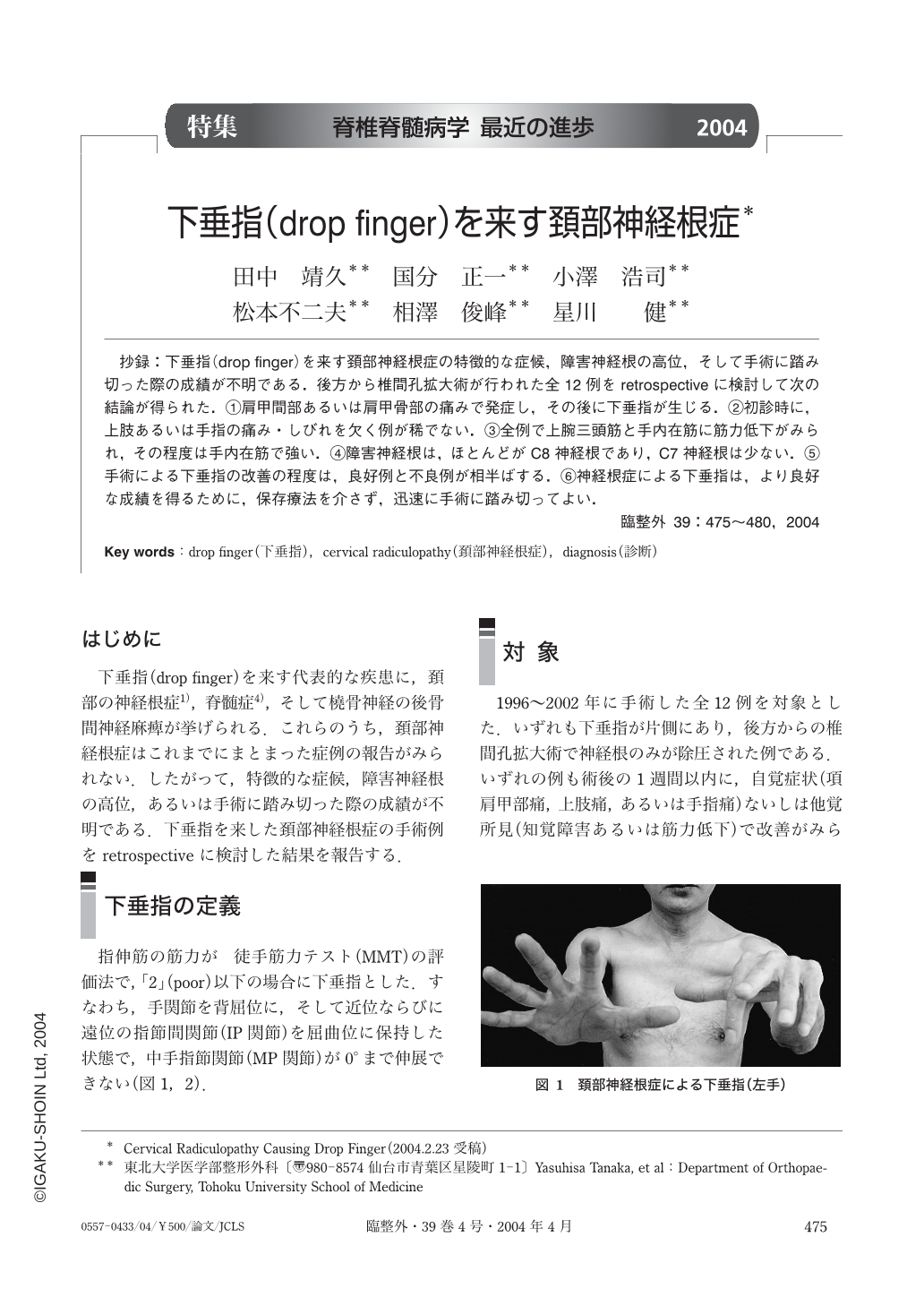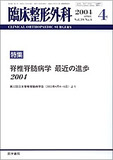Japanese
English
- 有料閲覧
- Abstract 文献概要
- 1ページ目 Look Inside
- サイト内被引用 Cited by
抄録:下垂指(drop finger)を来す頚部神経根症の特徴的な症候,障害神経根の高位,そして手術に踏み切った際の成績が不明である.後方から椎間孔拡大術が行われた全12例をretrospectiveに検討して次の結論が得られた.①肩甲間部あるいは肩甲骨部の痛みで発症し,その後に下垂指が生じる.②初診時に,上肢あるいは手指の痛み・しびれを欠く例が稀でない.③全例で上腕三頭筋と手内在筋に筋力低下がみられ,その程度は手内在筋で強い.④障害神経根は,ほとんどがC8神経根であり,C7神経根は少ない.⑤手術による下垂指の改善の程度は,良好例と不良例が相半ばする.⑥神経根症による下垂指は,より良好な成績を得るために,保存療法を介さず,迅速に手術に踏み切ってよい.
The symptomatology, nerve root levels involved, and results of surgical treatment of the cervical radiculopathies that cause drop finger have not been clarified. A retrospective review of 12 cases in which posterior foraminotomy had been performed to treat cervical radiculopathy led to the following conclusions. 1:Pain in the interscapular or scapular region precedes the occurrence of drop finger. 2:Frequently there is no arm or finger pain at the time of the first examination. 3:The triceps brachii and intrinsic muscles of the hand are affected in all patients, and the weakness of the intrinsic muscles predominates. 4:The nerve root involved is almost always C8, and seldom C7. 5:Recovery of drop finger after surgery is good in half the patients and poor in the other half. 6:It is recommended that patients with drop finger secondary to radiculopathy promptly be treated surgically without conservative intervention, because better results can be obtained.

Copyright © 2004, Igaku-Shoin Ltd. All rights reserved.


